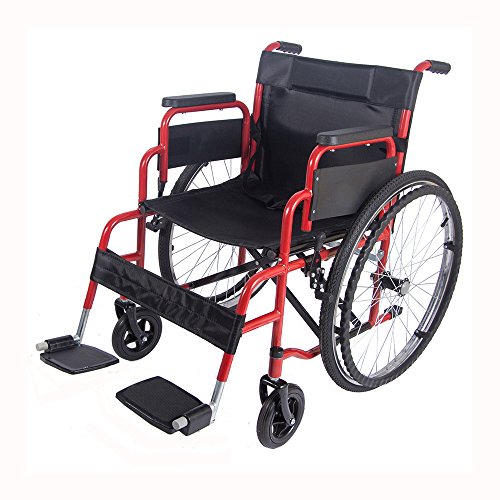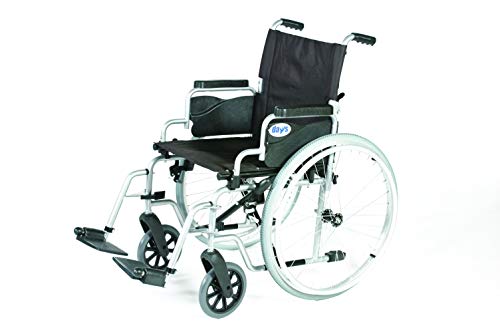See What Self Control Wheelchair Tricks The Celebs Are Making Use Of
Types of self propelled wheelchairs for sale Control Wheelchairs
Many people with disabilities utilize lightweight self propelled wheelchairs control wheelchairs to get around. These chairs are great for everyday mobility, and are able to easily climb hills and other obstacles. They also have huge rear flat shock absorbent nylon tires.
The translation velocity of the wheelchair was measured using the local field potential method. Each feature vector was fed to an Gaussian decoder, which output a discrete probability distribution. The evidence that was accumulated was used to generate visual feedback, and an instruction was issued when the threshold had been reached.
Wheelchairs with hand rims
The kind of wheels a wheelchair is able to affect its maneuverability and ability to traverse different terrains. Wheels with hand rims can help reduce wrist strain and provide more comfort to the user. Wheel rims for wheelchairs are made in steel, aluminum plastic, or other materials. They are also available in a variety of sizes. They can also be coated with rubber or vinyl to provide better grip. Some are ergonomically designed, with features like an elongated shape that is suited to the grip of the user’s closed and broad surfaces to allow for full-hand contact. This allows them to distribute pressure more evenly, and avoids pressing the fingers.
Recent research has revealed that flexible hand rims reduce impact forces on the wrist and fingers during activities during wheelchair propulsion. They also offer a wider gripping surface than standard tubular rims, which allows the user to exert less force while maintaining the stability and control of the push rim. These rims can be found at most online retailers and DME providers.
The study showed that 90% of respondents were pleased with the rims. However, it is important to remember that this was a postal survey of those who had purchased the hand rims from Three Rivers Holdings and did not necessarily reflect all wheelchair users who have SCI. The survey did not assess any actual changes in pain levels or symptoms. It only measured whether people perceived the difference.
The rims are available in four different designs, including the light, medium, big and prime. The light is a smaller-diameter round rim, whereas the medium and big are oval-shaped. The rims that are prime have a slightly larger diameter and an ergonomically contoured gripping area. All of these rims can be mounted on the front of the wheelchair and can be purchased in a variety of colors, ranging from naturalthe light tan color -to flashy blue green, red, pink, or jet black. They are quick-release and are easily removed for cleaning or maintenance. Additionally the rims are covered with a protective rubber or vinyl coating that helps protect hands from sliding across the rims and causing discomfort.
Wheelchairs with tongue drive
Researchers at Georgia Tech have developed a new system that allows users to maneuver a wheelchair and control other electronic devices by moving their tongues. It what is a self propelled wheelchair comprised of a tiny tongue stud that has magnetic strips that transmit movement signals from the headset to the mobile phone. The phone then converts the signals into commands that can be used to control the wheelchair or any other device. The prototype was tested by healthy people and spinal injury patients in clinical trials.
To test the performance of this system it was tested by a group of able-bodied people used it to complete tasks that assessed accuracy and speed of input. Fitts’ law was used to complete tasks such as keyboard and mouse use, and maze navigation using both the TDS joystick and the standard joystick. A red emergency stop button was included in the prototype, and a second participant was able to press the button if needed. The TDS was equally effective as a traditional joystick.
Another test The TDS was compared TDS to the sip-and-puff system, which allows people with tetraplegia control their electric wheelchairs by blowing air into a straw. The TDS completed tasks three times faster and with greater precision, as compared to the sip-and-puff method. The TDS is able to operate wheelchairs more precisely than a person with Tetraplegia, who steers their chair with a joystick.
 The TDS was able to track tongue position with an accuracy of less than a millimeter. It also included cameras that could record the movements of an individual’s eyes to detect and interpret their motions. Safety features for software were also integrated, which checked the validity of inputs from users twenty times per second. Interface modules would automatically stop the wheelchair if they didn’t receive an acceptable direction control signal from the user within 100 milliseconds.
The TDS was able to track tongue position with an accuracy of less than a millimeter. It also included cameras that could record the movements of an individual’s eyes to detect and interpret their motions. Safety features for software were also integrated, which checked the validity of inputs from users twenty times per second. Interface modules would automatically stop the wheelchair if they didn’t receive an acceptable direction control signal from the user within 100 milliseconds.
 The next step is testing the TDS with people with severe disabilities. They are partnering with the Shepherd Center located in Atlanta, a hospital for catastrophic care, and the Christopher and Dana Reeve Foundation to conduct the tests. They are planning to enhance their system’s sensitivity to lighting conditions in the ambient, to add additional camera systems and to allow repositioning of seats.
The next step is testing the TDS with people with severe disabilities. They are partnering with the Shepherd Center located in Atlanta, a hospital for catastrophic care, and the Christopher and Dana Reeve Foundation to conduct the tests. They are planning to enhance their system’s sensitivity to lighting conditions in the ambient, to add additional camera systems and to allow repositioning of seats.
Wheelchairs with joysticks
With a wheelchair powered with a joystick, clients can operate their mobility device with their hands without needing to use their arms. It can be placed in the middle of the drive unit or either side. It is also available with a screen that displays information to the user. Some screens have a large screen and are backlit for better visibility. Some screens are smaller and may have images or symbols that could help the user. The joystick can also be adjusted to accommodate different hand sizes grips, as well as the distance between the buttons.
As the technology for power wheelchairs advanced, clinicians were able to create alternative driver controls that allowed clients to maximize their potential. These advancements also enable them to do this in a manner that is comfortable for the user.
A normal joystick, for example, is a proportional device that utilizes the amount deflection of its gimble to provide an output which increases with force. This is similar to the way that accelerator pedals or video game controllers work. This system requires excellent motor functions, proprioception and finger strength to work effectively.
A tongue drive system is a different kind of control that makes use of the position of a person’s mouth to determine the direction in which they should steer. A magnetic tongue stud sends this information to the headset, which can carry out up to six commands. It can be used by people with tetraplegia and quadriplegia.
Certain alternative controls are simpler to use than the standard joystick. This is particularly beneficial for people with limited strength or finger movement. Some of them can be operated with just one finger, making them perfect for those who are unable to use their hands in any way or have very little movement in them.
Additionally, some control systems come with multiple profiles that can be customized for the needs of each user. This can be important for a novice user who may need to change the settings regularly, such as when they feel fatigued or have a disease flare up. This is helpful for experienced users who want to change the parameters that are set for a specific setting or activity.
Wheelchairs with steering wheels
ultra lightweight self propelled wheelchair-propelled wheelchairs can be used by those who have to move themselves on flat surfaces or up small hills. They have large wheels on the rear for the user’s grip to propel themselves. They also come with hand rims that allow the user to make use of their upper body strength and mobility to move the wheelchair in either a forward or backward direction. self control wheelchair-propelled wheelchairs can be equipped with a wide range of accessories, including seatbelts, dropdown armrests and swing away leg rests. Certain models can be converted into Attendant Controlled Wheelchairs, which allow caregivers and family to drive and control wheelchairs for users who require assistance.
Three wearable sensors were attached to the wheelchairs of participants to determine the kinematic parameters. The sensors monitored the movement of the wheelchair for one week. The distances tracked by the wheel were measured using the gyroscopic sensor that was mounted on the frame as well as the one mounted on the wheels. To distinguish between straight-forward movements and turns, periods where the velocities of the left and right wheels differed by less than 0.05 milliseconds were deemed to be straight. Turns were then investigated in the remaining segments, and the turning angles and radii were calculated based on the wheeled path that was reconstructed.
This study involved 14 participants. The participants were tested on navigation accuracy and command latencies. They were asked to maneuver in a wheelchair across four different wayspoints on an ecological experiment field. During navigation trials, sensors tracked the wheelchair’s path across the entire course. Each trial was repeated at least twice. After each trial, the participants were asked to select which direction the wheelchair to move into.
The results showed that the majority of participants were capable of completing the navigation tasks, although they did not always follow the right directions. On the average 47% of turns were correctly completed. The remaining 23% either stopped immediately after the turn, or redirected into a subsequent turning, or replaced by another straight motion. These results are similar to those of previous studies.

Leave a Reply